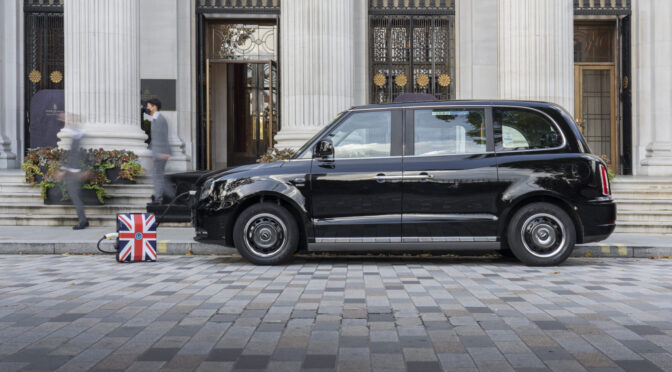ZipCharge, today at COP26, revealed its first game-changing portable Electric Vehicle (EV) charger, the Go. By bringing the possibility of home charging to all, the Go removes a common barrier to EV ownership that exists across the world. In the UK alone, 8.5 million or 40% of car-owning households don’t have designated off-street parking.
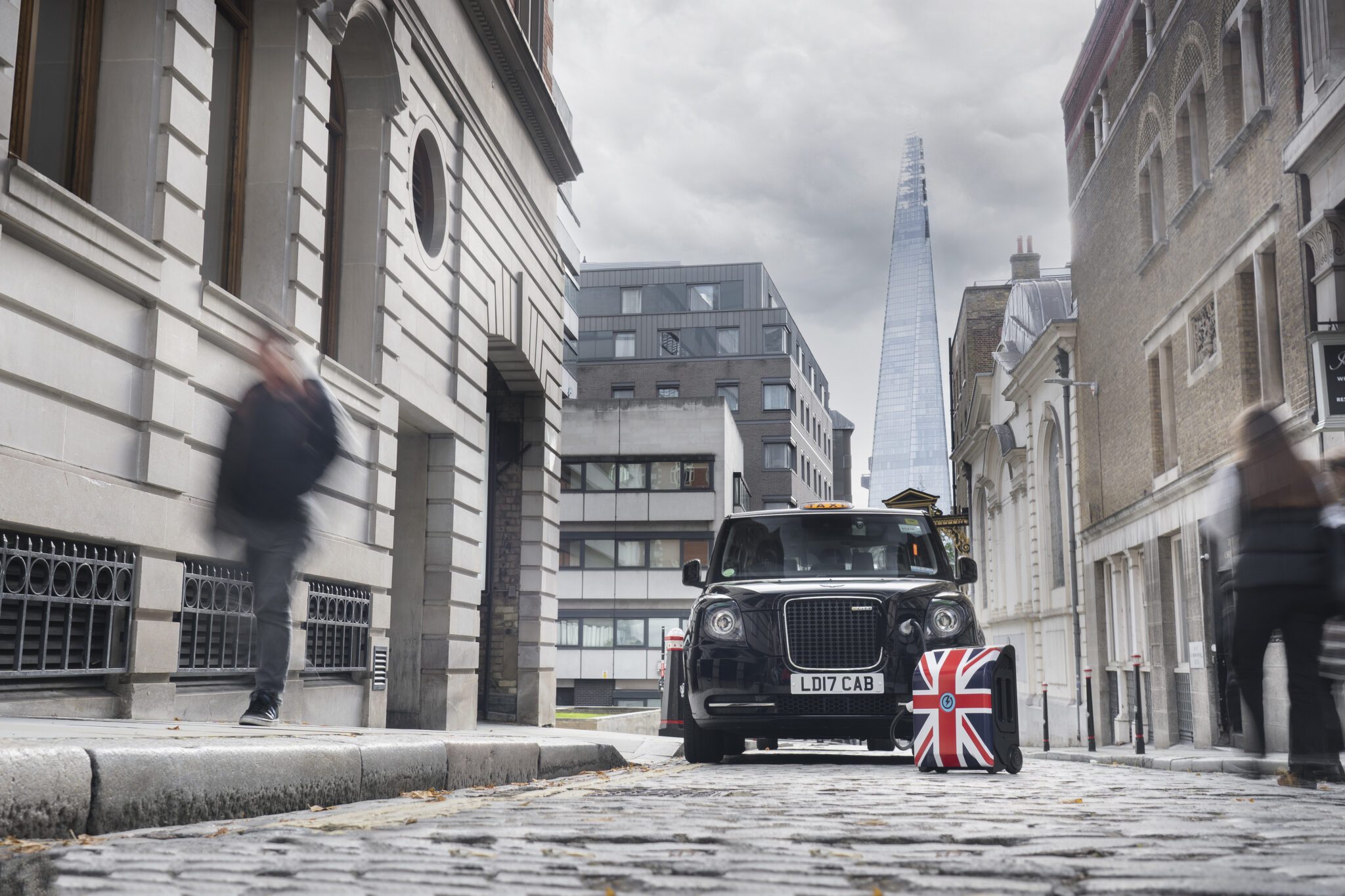
The Go is the first element of a global portable EV charging platform that combines hardware, software, machine learning and innovative ownership models to bring affordable, practical EV charging to more people than ever. ZipCharge Go also creates an intelligent energy management platform that provides flexibility and resilience for the national power grid.
Realising that widespread EV adoption would be hampered by the inability to charge near or at home, ZipCharge co-founders Richie Sibal and Jonathan Carrier identified and developed a solution. Using their decades of experience in automotive electronics systems engineering and product development gained at cutting-edge businesses like McLaren Automotive, Jaguar Land Rover, Lotus, Gordon Murray Group and LEVC – their answer is the Go. Now well into the development phase ZipCharge is on track to deliver the first models to customers in Q4 2022.
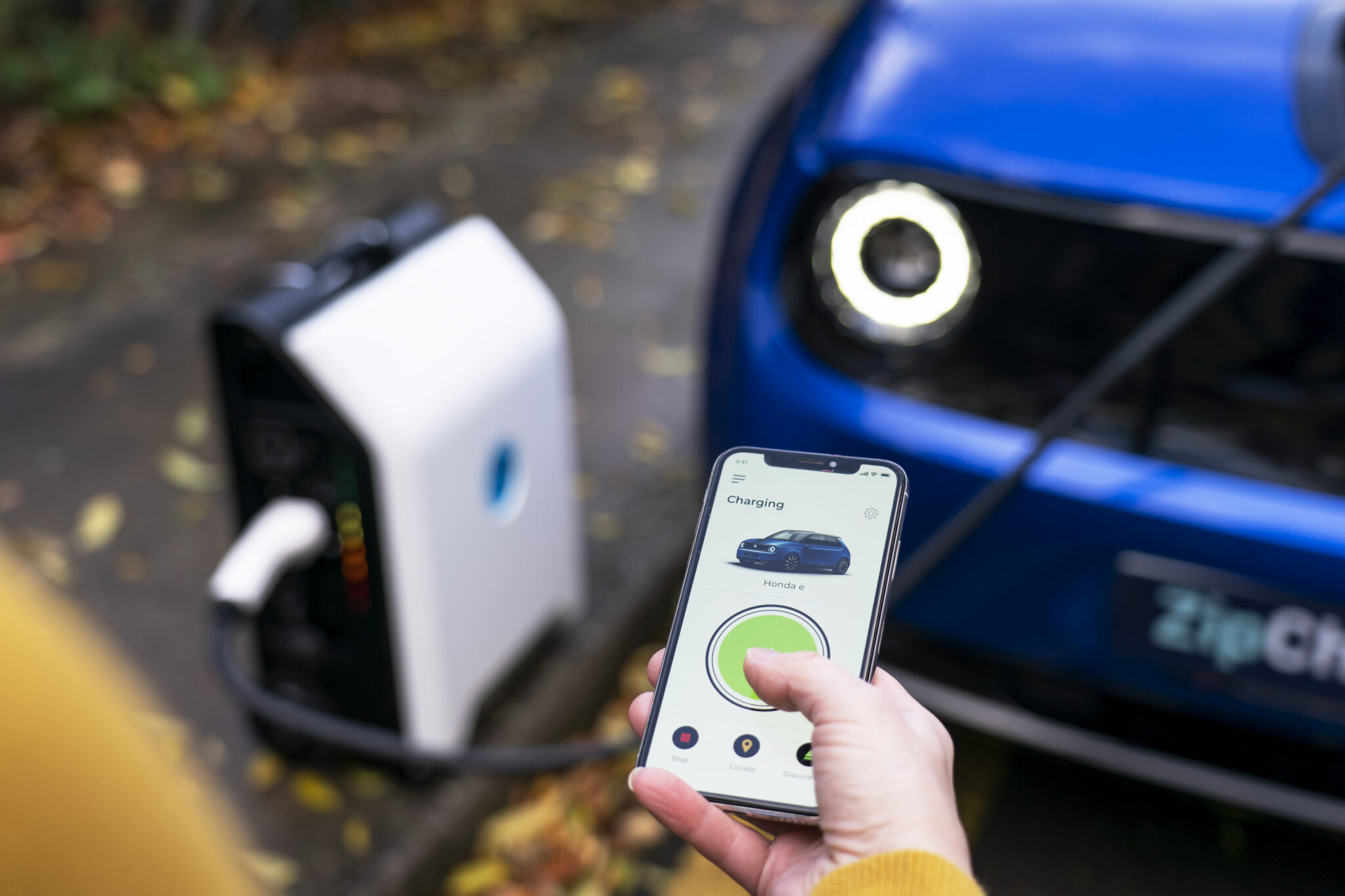
ZipCharge Co-founder Jonathan Carrier “We’re delighted to be launching the Go at COP26, it’s the perfect place to introduce ZipCharge to the world. In light of the Government’s recent Net Zero Strategy: Build Back Greener manifesto announcement, never before has the automotive industry had cause to innovate so rapidly to help us reach a low carbon future. One of the key barriers to wider uptake of EVs is charging anxiety; the inability to charge near or at home. ZipCharge removes that hurdle and in doing so, will democratise EV ownership.”
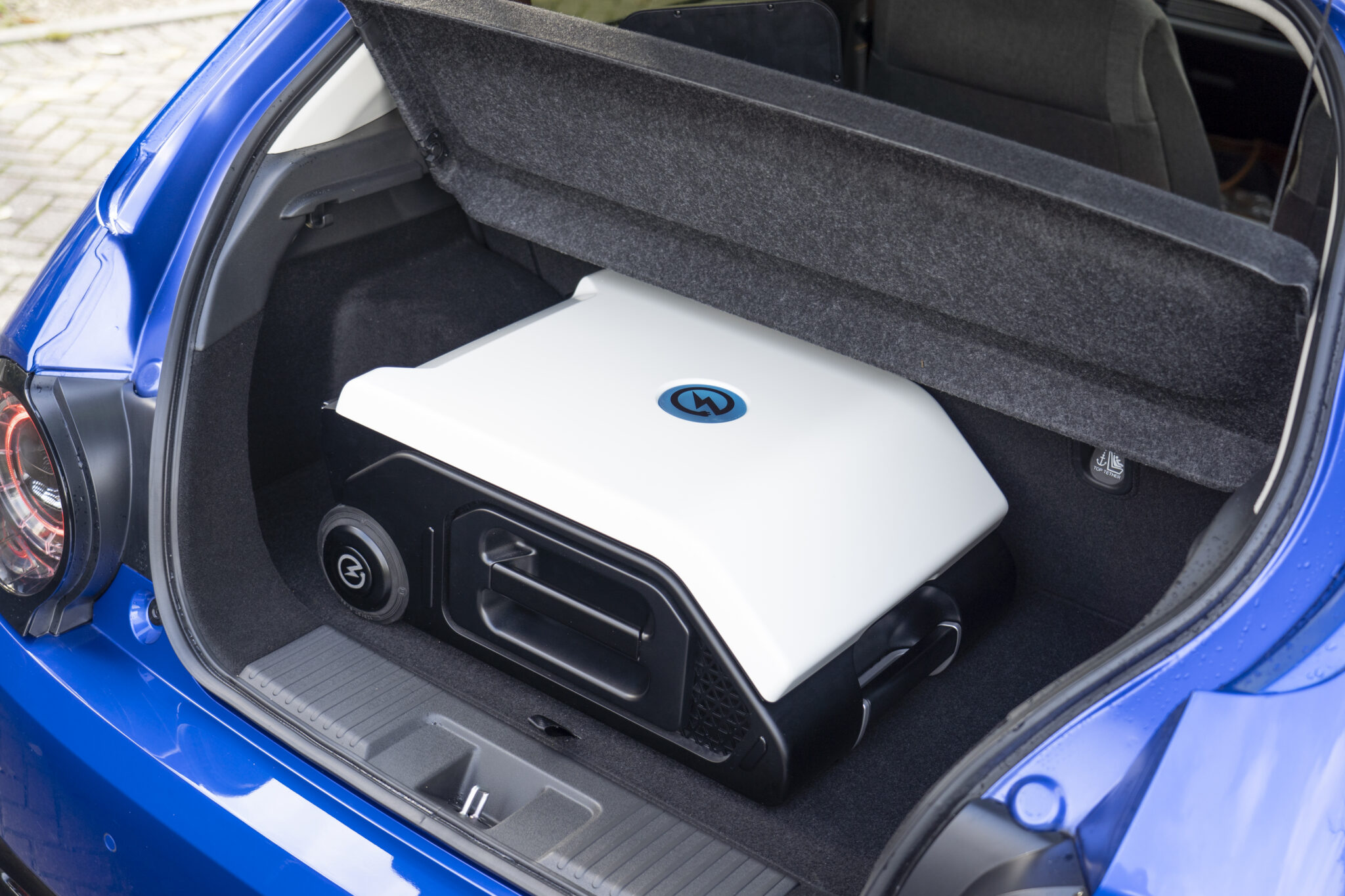
Events such as COP26, the United Nation’s Climate Conference, are crucial to establishing robust plans to achieving the Paris Agreement. The ZipCharge team is cognisant of the fact that transport is a key contributor of greenhouse gases; the rapid adoption of EVs and innovation in automotive are key to ensuring the target of net zero is met.
The SMMT, the UK’s most influential motoring trade body, advises there are currently 600,000 plug-in electric hybrid vehicles (PHEV) and battery electric vehicles (BEV) on the roads in the UK today – up 66% on 2019 figures – that could make use of the ZipCharge product. Mike Hawes, the Chief Executive of the SMMT, said earlier this year “In the same way people charge a phone overnight, people will want to charge at home when they park overnight.”
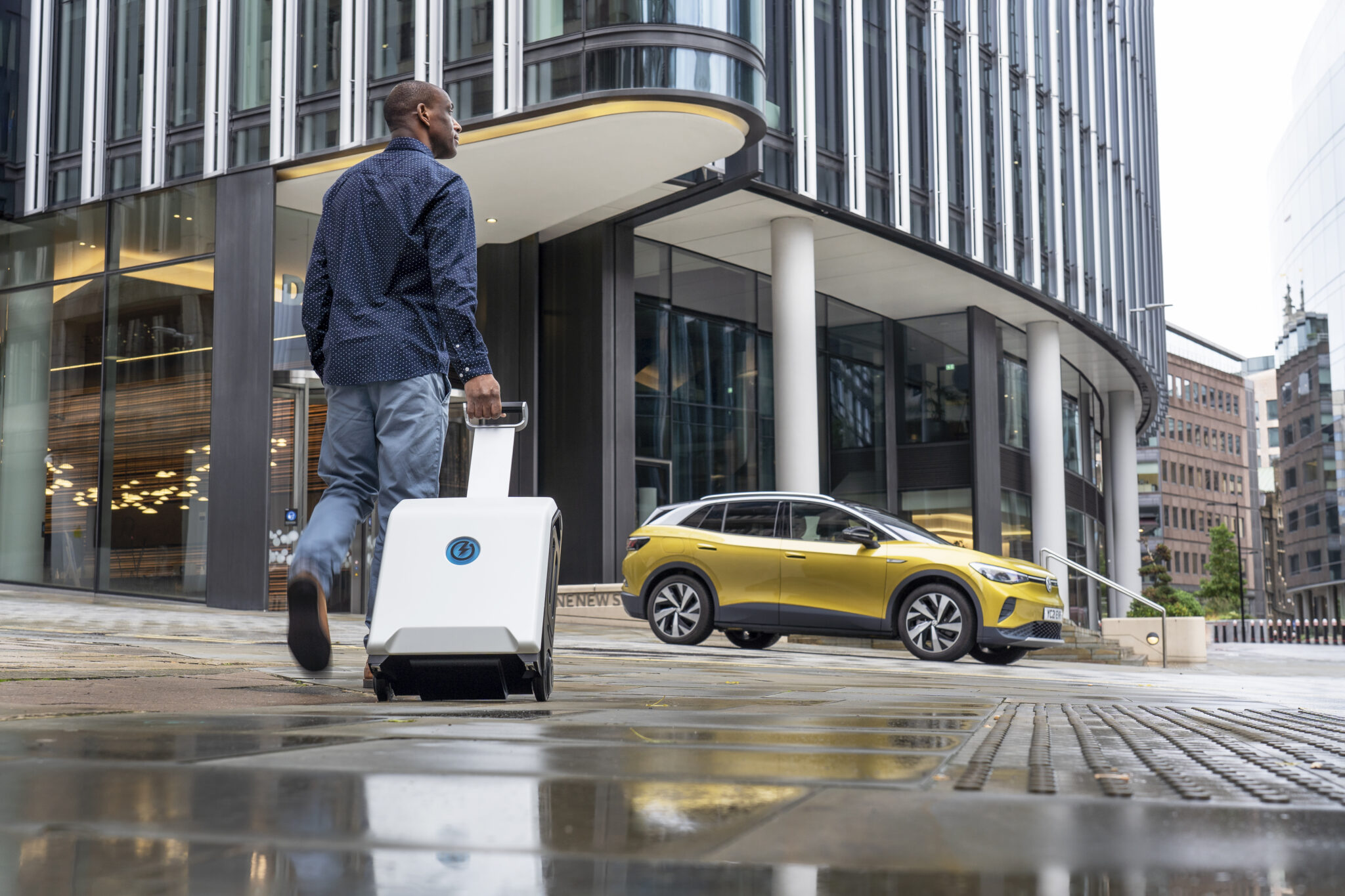
Distinctive design that combines simplicity and attention to detail
The ZipCharge Go sets a new standard in the visual appeal of EV chargers, with a purity of form and a modern, consumer-focused design concept. Developed by automotive and consumer product designers, the form conveys simplicity, strength and aesthetic integrity. The design balances form and function, respecting the engineering requirements, with a strong symmetry in its detail design. For example, the power panel concentrates charging functions and status LEDs in a single location to simplify access and makes the Go easier to use, which is mirrored by the scallop for the side grab handle. The front cover can also be personalised in a range of different colours and finishes, to match the exterior of your EV.
Compact and Convenient to Use Everyday
Engineered to the same standards as automotive electronics systems, the lightweight ZipCharge Go power bank is the size of a compact wheeled suitcase which can be charged at home or elsewhere using a standard domestic plug at a lower cost per kWh of electricity when compared to public charging. Using the retractable handle, users then wheel it to wherever they’ve parked their EV and plug it into the charging port. The port locks the charging cable in, securing the charger with the vehicle. ZipCharge Go provides up to 20 miles (32km)* of range, providing sufficient range for the average daily commute (in UK/EU), in a little over 30 mins and can then be neatly stored in the trunk / boot, or at home. ZipCharge Go can be used in all normal weather conditions like a normal fixed charge point.
High Performance Battery and Power Electronics
Packaged neatly inside are high energy density NMC lithium-ion battery cells and associated power electronics. A bi-directional AC-DC inverter enables two-way charging from the grid to the unit, and from the unit to the grid, so the power bank can be used to store cheap off-peak energy and feed it back into the grid at peak times. An integrated communications module supports OCPP compliant smart charging, over-the-air updates, remote diagnostics, and together with geo-fencing and tracking technology provides enhanced security and peace-of-mind.
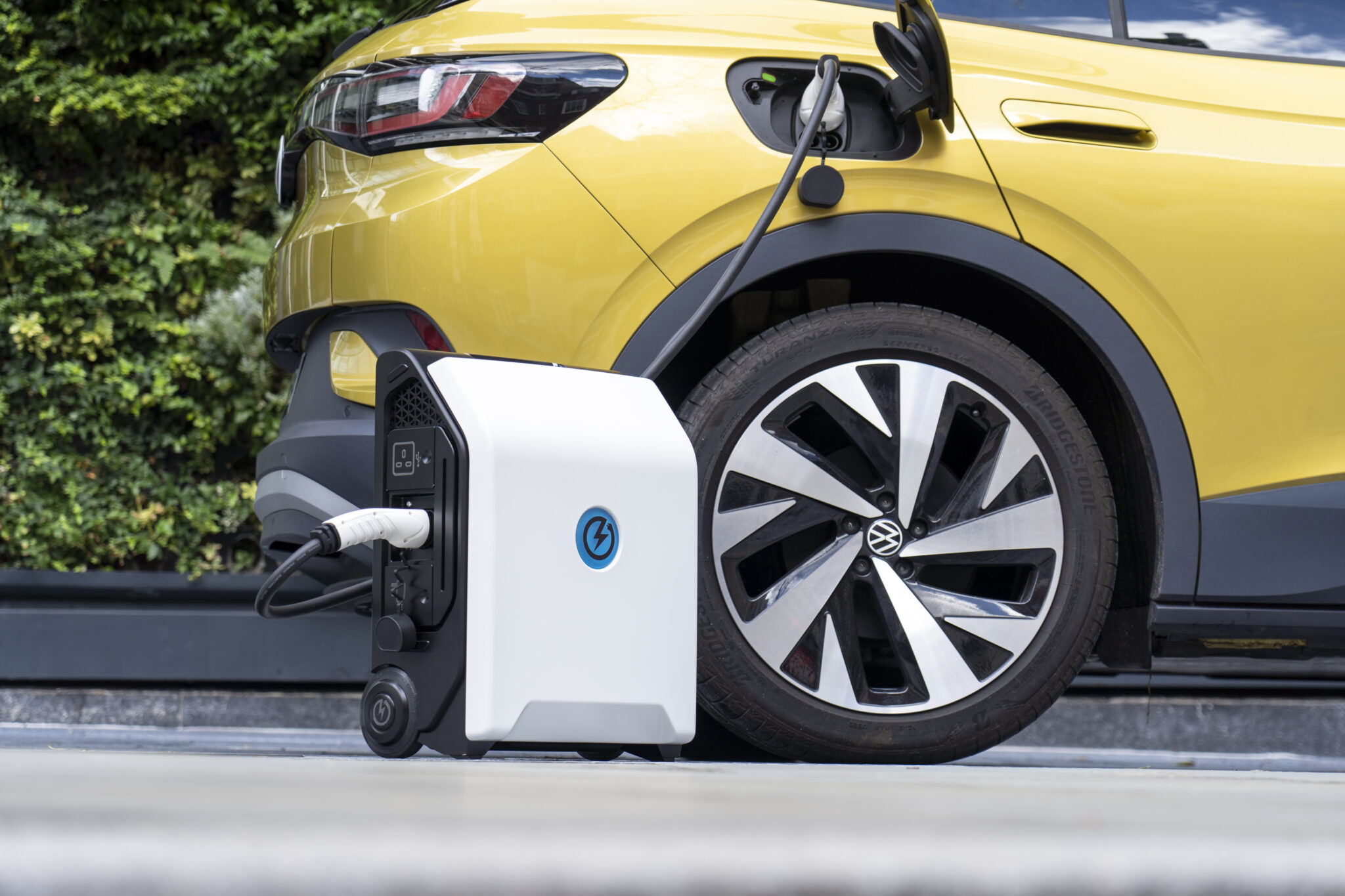
ZipCharge Co-founder Richie Sibal “Our technical approach to engineering the Go as a lightweight, compact and safe charging solution, and then evolving that into an EV charging platform reflects our intention to combine the development of battery-based systems with the lowest future environmental impact possible.”
Sustainable Materials and Circular Approach
In engineering the Go, ZipCharge has focused on making the most of our planet’s limited resources, by doing more with less. The Go has been developed to be as energy efficient as possible with minimal losses. With learnings from automotive, the Go is designed for lightweight and performance. Like sports cars, ZipCharge uses an aluminium spaceframe to house major systems thereby improving the integrity and stiffness of the unit. This intelligent engineering extends to the consideration of the environmental impact of the materials and components. For example, the Go’s outer shell will be made from post-consumer recycled plastic. By the second half of this decade the ambition is for every ZipCharge charger to be manufactured from recycled materials.
Smart Connectivity to Lower the Cost of Charging and Save Money
Integrated 2G/4G connectivity enables users to remotely manage their Go charger via the ZipCharge mobile app to monitor the device and schedule charging events so the power pack is always ready for when they need it. Inbuilt Artificial Intelligence (AI) will enable ZipCharge to learn the users’ charging patterns and make schedule recommendations to optimise charging at off peak times, saving money and reducing the load on the grid.
Intelligent Energy Management to Support the Energy Network
Thanks to the bi-directional AC-DC inverter, the Go power bank becomes a local energy storage device that can arbitrage energy pricing through time of use rates and, when not in use, sell energy back to the grid at peak times. When hundreds of decentralised Go chargers are pooled together they form a virtual power plant that can supply demand side response services to help balance the grid, providing flexibility and resilience.
Affordability and Flexible Ownership to Democratise Charging for All
Like Peloton and other hardware pioneers, ZipCharge will offer its hardware-as-a-service. Chargers will be available to purchase outright or on subscription for as little as £49 (€57) a month. This is possible because ZipCharge has set the ambitious target to offer the Go at a price comparable to the fully installed cost of a level 2 home charge point, and significantly less than bi-directional home charge points currently on the market.
Basic software functionality will be available to everyone so they can plan and schedule charging, with the enhanced AI software functionality and insurance on subscription for a small monthly fee which, on average, will save the user £15-20 per month. Charging an EV at home has never been so convenient and affordable.
Discover more from Matt Porter, The Gadget Man - AI, Technology News and Reviews
Subscribe to get the latest posts sent to your email.

